Exploring Affordable Closed Terrariums for Your Home
You can transform your living space with closed terrariums—small, self-sustaining ecosystems in sealed containers—without breaking the bank. These mini gardens, often built in glass jars or bottles, mimic natural environments with layers of pebbles (1-2 inches for drainage), activated charcoal (0.5 inch to filter impurities), and soil (2-3 inches for plants). Start with a simple mason jar setup. Want to uncover more budget-friendly ideas? Stick around for creative inspiration!
Contents
Mason Jar Miniature Forest

Mason jar miniature forests are a charming and affordable way to bring a piece of nature into your home through a closed terrarium. Using a simple glass mason jar, you can create a self-sustaining ecosystem that requires minimal maintenance. These jars are widely available, inexpensive, and come in various sizes, making them perfect for crafting a tiny forest that fits on a shelf, desk, or windowsill.
To create a mason jar miniature forest, start with a layer of pebbles or gravel at the bottom for drainage, followed by a thin layer of activated charcoal to prevent mold and odors. Add a layer of potting soil, then plant small, humidity-loving plants like mosses, ferns, or air plants. Seal the jar with its lid to maintain a humid environment, and place it in indirect sunlight to mimic the conditions of a forest floor. This setup not only looks enchanting but also serves as a low-cost, low-effort way to enjoy a slice of greenery indoors.
These miniature forests are ideal for beginners or those with limited space, as they require little watering—often just a spritz every few weeks—and can thrive for months or even years with proper care. Personalize your jar by adding small figurines, rocks, or driftwood to create a whimsical scene. This concept transforms an everyday item into a fascinating display of nature, proving that even the smallest spaces can house a thriving ecosystem.
Recycled Glass Bottle Oasis

Creating a recycled glass bottle oasis is a budget-friendly and eco-conscious way to build a closed terrarium for your home. By repurposing old glass bottles, such as wine or soda bottles with wide necks, you can craft a miniature ecosystem that thrives with minimal maintenance. This concept not only reduces waste but also adds a unique, rustic charm to your decor, making it a perfect conversation starter.
To start, thoroughly clean and dry the glass bottle to guarantee a healthy environment for your plants. Add layers of small pebbles or gravel at the bottom for drainage, followed by a thin layer of activated charcoal to prevent mold and odors. Then, add a layer of potting soil suitable for small, humidity-loving plants like moss, ferns, or air plants. Carefully place the plants inside using a spoon or small tool, and lightly mist the interior to maintain moisture before sealing the bottle with a cork or lid.
This DIY terrarium idea is ideal for small spaces, as it requires little room and can be placed on a windowsill or shelf. The closed environment helps retain humidity, mimicking a tropical habitat, and the glass amplifies the greenery’s beauty. With just a few recycled materials and a touch of creativity, you can transform everyday items into an enchanting green oasis.
Thrifted Container Jungle
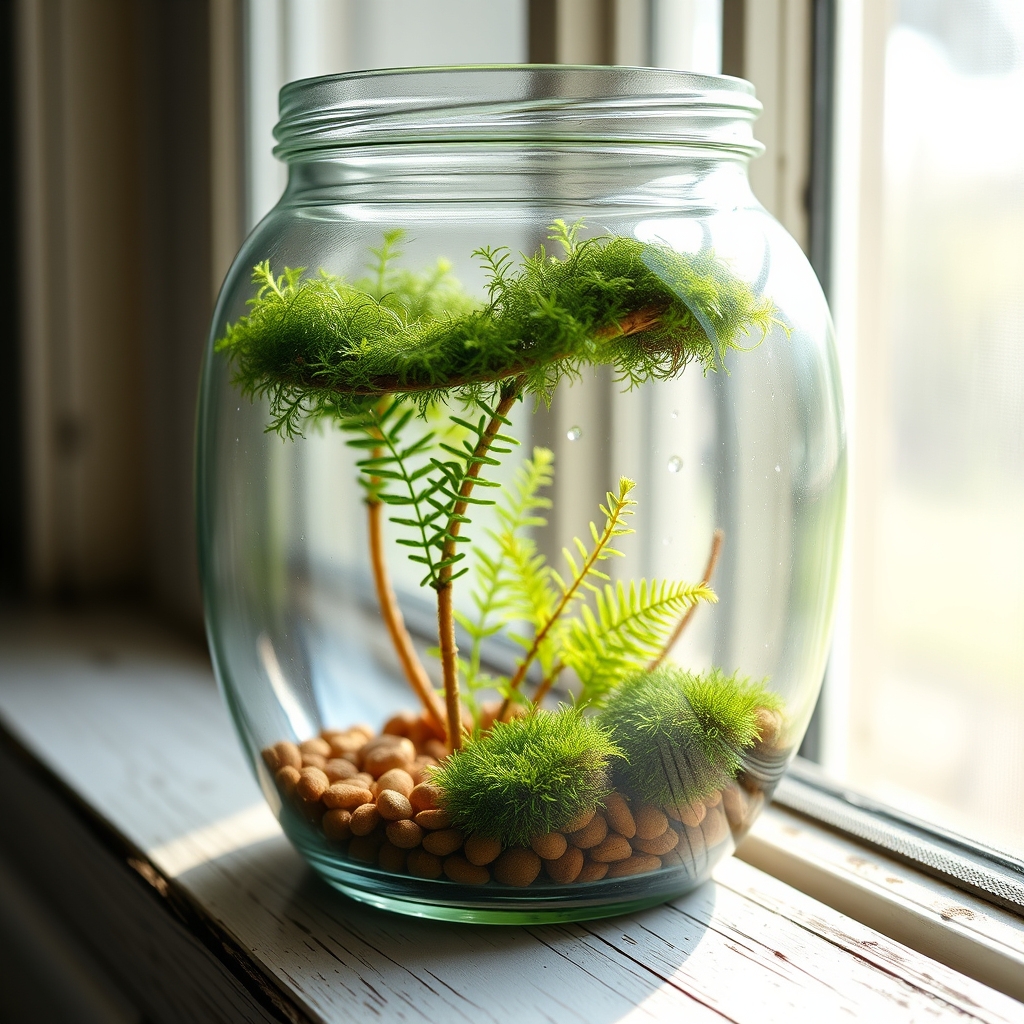
Creating a thrifted container jungle is a budget-friendly and creative way to build a closed terrarium for your home. By scouring thrift stores, garage sales, or even your own collection of unused items, you can find unique glass containers like old jars, vases, or even fish bowls that can be repurposed into stunning miniature ecosystems. These thrifted finds often come with character and charm, adding a personal touch to your terrarium while keeping costs low.
The process is simple: select a container with a lid or one that can be sealed to maintain humidity, clean it thoroughly, and layer the bottom with pebbles or gravel for drainage. Add a barrier layer like moss or mesh to prevent soil from mixing with the drainage layer, then add a thin layer of potting mix suitable for small tropical plants or ferns. Choose affordable, low-maintenance plants like mosses, air plants, or small-leafed ivy, which thrive in the humid environment of a closed terrarium, and arrange them to create a lush, jungle-like scene.
Not only does a thrifted container jungle save money, but it also promotes sustainability by reusing items that might otherwise go unused. You can further personalize your terrarium by adding tiny figurines, rocks, or driftwood found during your thrift adventures, making each piece a unique reflection of your style. This approach transforms everyday objects into a vibrant, green oasis that brings nature indoors without breaking the bank.
Budget-Friendly Moss Haven
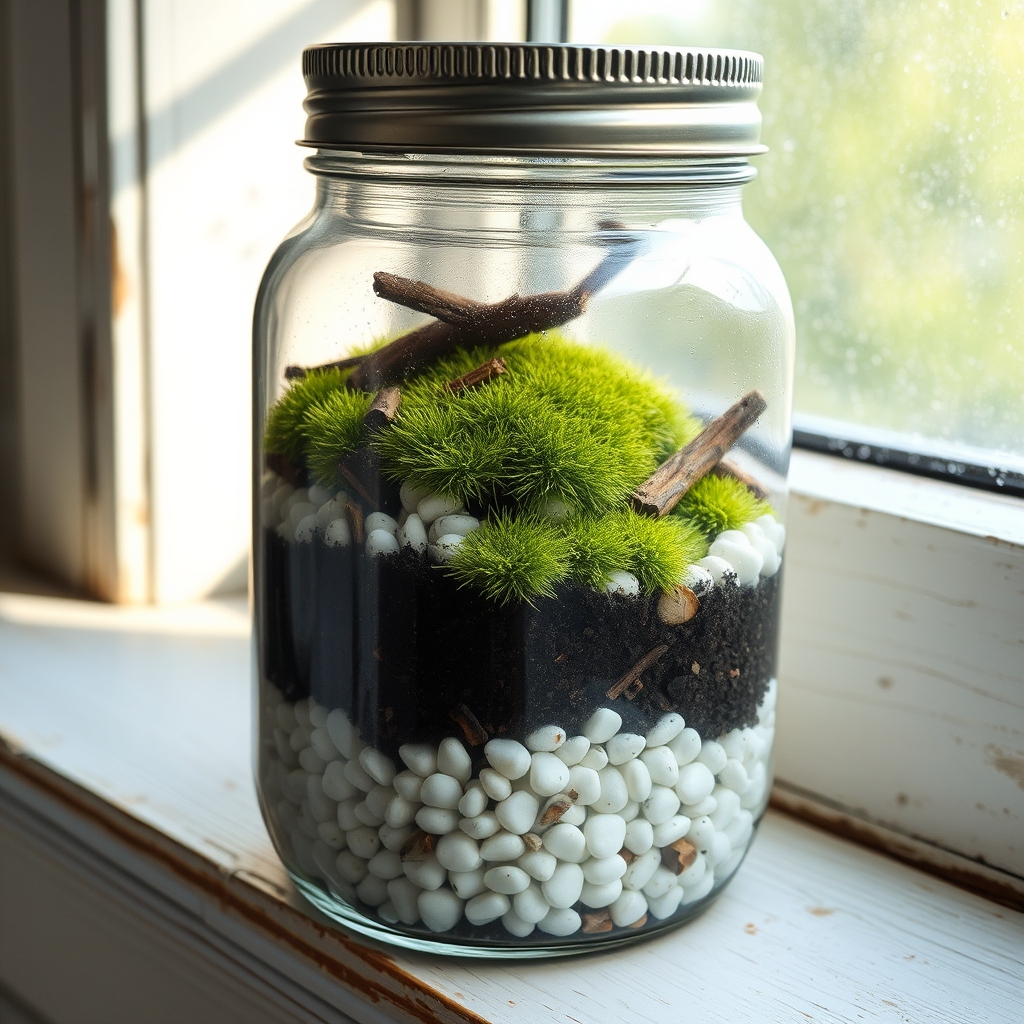
Creating a budget-friendly moss haven in a closed terrarium is an excellent way to bring a lush, green element into your home without breaking the bank. Moss is a low-maintenance plant that thrives in the humid, enclosed environment of a terrarium, making it an ideal choice for beginners or those looking to save on costs. By using affordable materials and sourcing moss from local areas or inexpensive suppliers, you can craft a serene miniature landscape that mimics a forest floor.
Start with a simple glass container, such as a recycled jar or a thrifted vase, which can often be found for just a few dollars. Layer the bottom with small pebbles or gravel for drainage, followed by a thin layer of activated charcoal to keep the environment fresh. Then, add a substrate of potting soil mixed with sand, and top it with moss collected from your backyard or purchased in small quantities from a nursery. This setup not only keeps costs low but also guarantees the moss has the right conditions to flourish.
To enhance the visual appeal without additional expense, incorporate natural elements like small rocks, twigs, or bark pieces found outdoors. These additions create a naturalistic vibe and provide texture to your moss haven. With minimal watering and indirect sunlight, your terrarium will remain a vibrant, low-cost green space in your home for months to come.
DIY Wine Glass Ecosystem
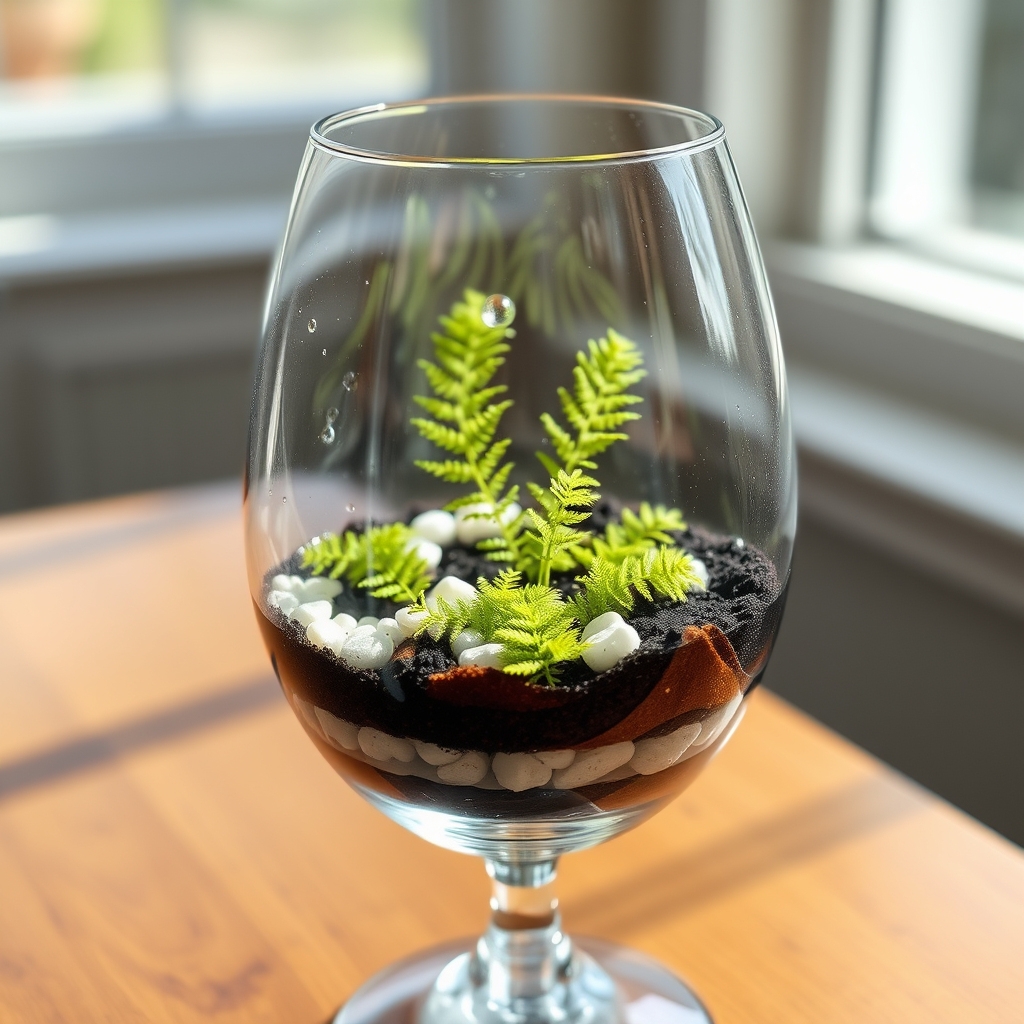
Creating a DIY wine glass ecosystem is an innovative and affordable way to bring a miniature closed terrarium into your home. Using a simple wine glass, you can craft a self-sustaining environment for small plants like moss, air plants, or tiny ferns. The glass’s shape not only provides a clear view of the tiny ecosystem but also helps retain moisture, mimicking the conditions of a larger terrarium.
To start, gather a clean wine glass, small pebbles or gravel for drainage, activated charcoal to prevent mold, potting soil, and your chosen plants. Layer the bottom with pebbles, add a thin layer of charcoal, and then a layer of soil before carefully planting your selections. Lightly water the setup and cover the top with a small piece of plastic wrap or a glass lid to trap humidity, ensuring the ecosystem remains balanced.
This compact terrarium concept is perfect for small spaces like desks or shelves, adding a touch of greenery without requiring much maintenance. It’s an ideal project for beginners, as it combines creativity with simplicity, and the materials are often readily available at home or inexpensive to purchase.
Upcycled Jar Tropical Escape
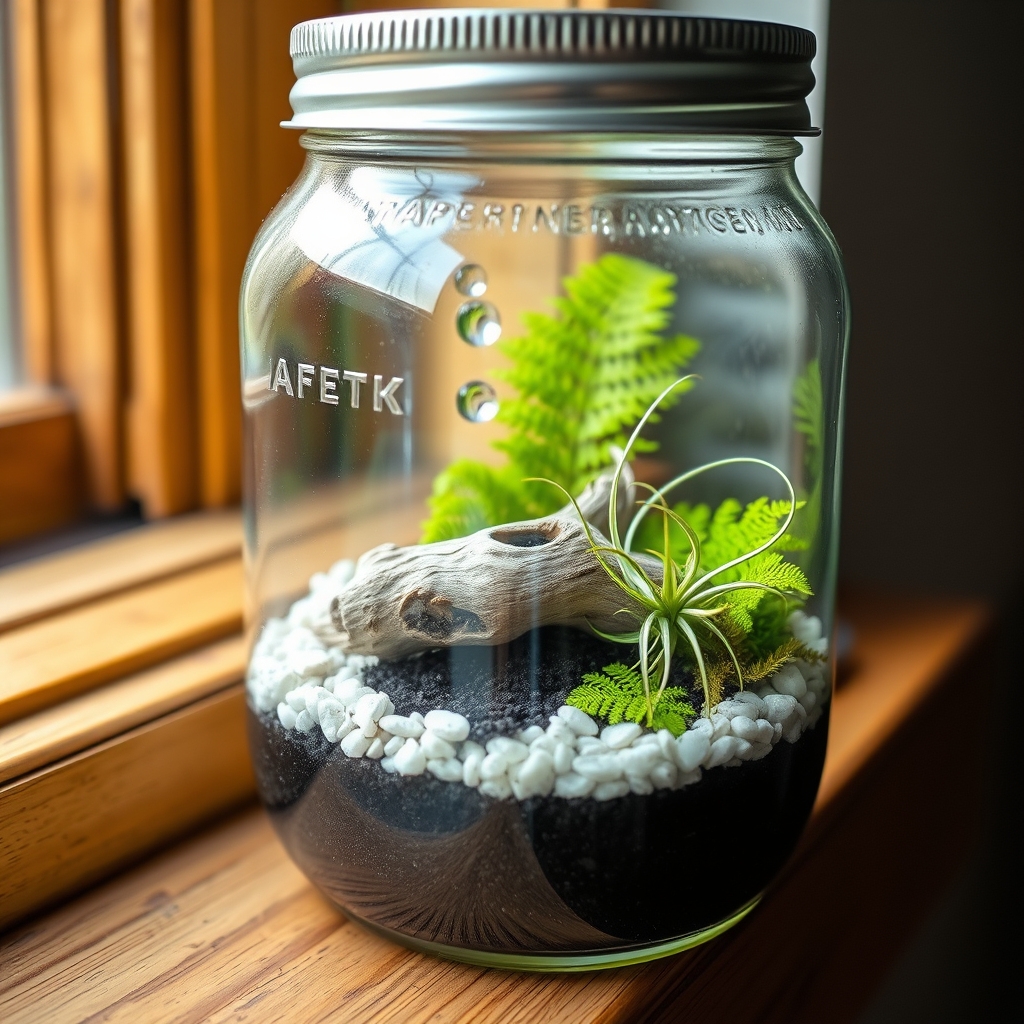
The Upcycled Jar Tropical Escape is a creative and budget-friendly way to bring a slice of the tropics into your home using items you likely already have. This concept involves repurposing old glass jars, such as those from pickles, pasta sauce, or jam, into miniature terrariums. By cleaning and sterilizing these jars, you create a perfect vessel for a small, self-contained ecosystem that mimics a lush, tropical environment.
Start by adding a layer of pebbles or small rocks at the bottom of the jar for drainage, followed by a thin layer of activated charcoal to keep the environment fresh. Then, add a layer of potting soil suitable for tropical plants, and plant small, humidity-loving species like ferns, mosses, or miniature orchids. Seal the jar with its lid to maintain humidity, and place it in a spot with indirect sunlight to avoid overheating. This tiny tropical escape not only recycles materials but also adds a vibrant, green touch to any corner of your home.
For an extra personal touch, decorate the jar with small figurines, shells, or driftwood to enhance the tropical theme. This upcycled terrarium is low-maintenance, requiring only occasional misting if condensation levels drop. It’s an ideal project for beginners looking to experiment with closed terrariums without investing in expensive containers.
Affordable Succulent Sphere
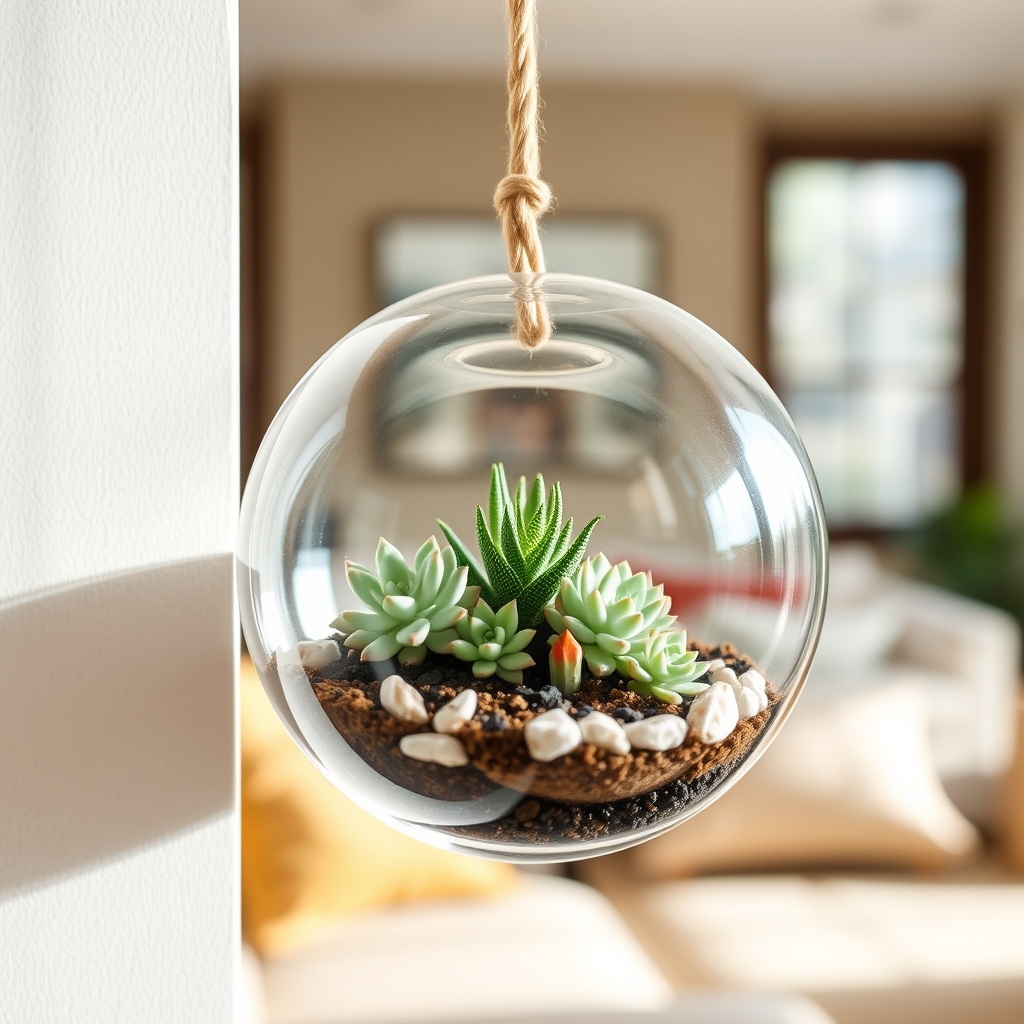
Creating an affordable succulent sphere is a delightful way to bring a touch of greenery into your home without breaking the bank. This concept involves crafting a small, enclosed terrarium using a clear glass orb or sphere that can be hung or placed on a stand. Succulents are an ideal choice for this project due to their low maintenance needs and ability to thrive in confined spaces with minimal watering. You can often find affordable glass spheres at craft stores or online, and succulents are widely available at garden centers or even propagated from cuttings for an even lower cost.
To assemble your succulent sphere, start by adding a layer of small pebbles or gravel at the bottom for drainage, followed by a thin layer of activated charcoal to keep the environment fresh. Then, add a layer of sphagnum moss or succulent-specific soil mix, and carefully plant small succulents or cuttings into the soil. Since the sphere is enclosed, it creates a humid microclimate that helps the plants retain moisture, reducing the need for frequent care. Hang the sphere in a spot with indirect sunlight, and you’ll have a stunning, budget-friendly decor piece that adds life to any room.
For an added personal touch, consider decorating the sphere with tiny figurines, colored stones, or fairy lights to enhance its visual appeal. This project not only serves as an affordable decor option but also allows for creativity and customization. With minimal investment in materials and plants, a succulent sphere can be a charming and sustainable addition to your home.
Low-Cost Fern Retreat
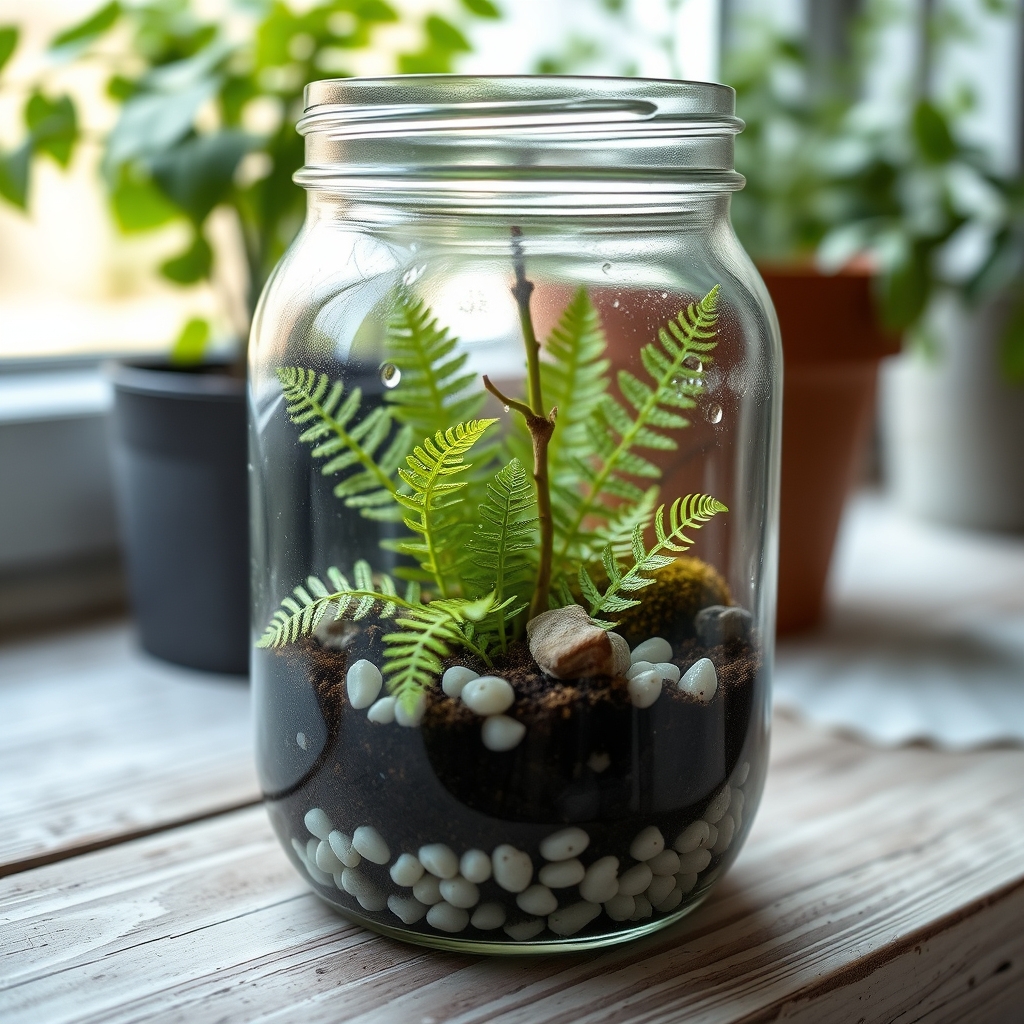
Creating a low-cost fern retreat in a closed terrarium is an excellent way to bring a lush, green escape into your home without breaking the bank. Ferns are ideal for terrariums due to their love for high humidity and low light conditions, which mimic their natural forest floor habitats. By using affordable materials and easy-to-find plants, you can craft a miniature fern haven that thrives with minimal maintenance.
Start with a budget-friendly glass container, such as a repurposed jar or a thrifted vase, to serve as the base of your terrarium. Layer the bottom with inexpensive materials like pebbles or gravel for drainage, followed by a thin layer of activated charcoal to prevent mold and odors. Add a substrate of potting soil mixed with sphagnum moss, which is often available at low cost in garden centers, to create a moist, nutrient-rich environment for ferns like the maidenhair or button fern, both of which are typically affordable and widely available.
To keep costs down, propagate ferns from cuttings or divisions if you or a friend already have a plant, or purchase small starter plants from local nurseries. Arrange the ferns to create a natural, woodland look, and add small, inexpensive decorations like river rocks or twigs for a forest-like aesthetic. Seal the container to maintain humidity, place it in indirect light, and enjoy a serene, low-maintenance fern retreat that enhances your home’s ambiance on a budget.

A Simple Cookie Jar Garden is an incredibly easy and budget-friendly way to create a closed terrarium for your home. Using a basic glass cookie jar with a lid, you can craft a miniature ecosystem that thrives with minimal maintenance. This concept is perfect for beginners or anyone looking to add a touch of greenery to their space without investing in expensive materials.
To start, gather a clean cookie jar, small pebbles or gravel for drainage, activated charcoal to prevent mold, potting soil, and small plants like moss, ferns, or air plants that thrive in humid environments. Layer the bottom with pebbles, add a thin layer of charcoal, and then a layer of soil before planting your chosen greenery. Seal the jar with its lid to create a self-sustaining environment where moisture recycles through condensation.
This setup not only repurposes an everyday item but also serves as a charming decorative piece for shelves, countertops, or desks. The clear glass allows you to observe the tiny world inside, making it a delightful and low-cost addition to your home decor.
Economical Apothecary Jar Biome
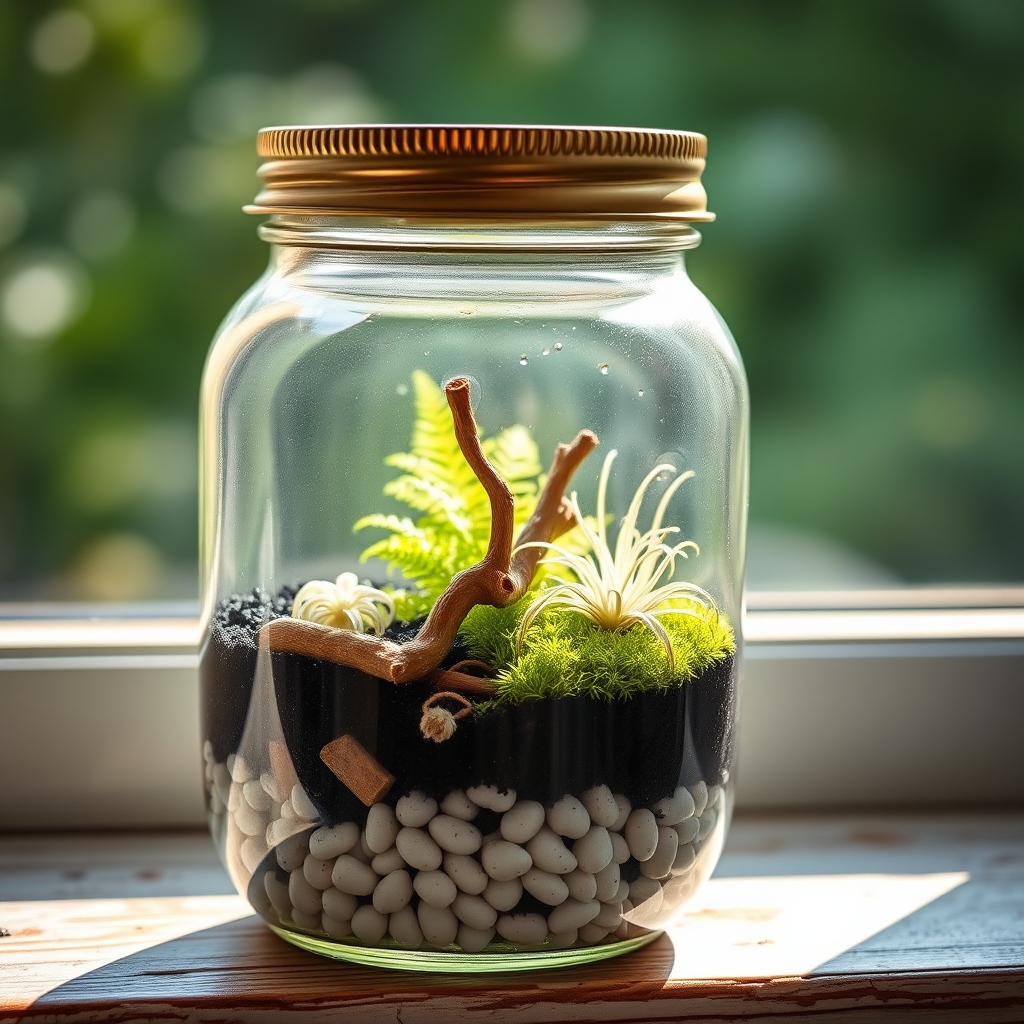
An economical apothecary jar biome is a budget-friendly way to create a closed terrarium using readily available glass containers. Apothecary jars, often found at thrift stores or discount retailers, provide an airtight environment ideal for maintaining the humidity needed for a thriving miniature ecosystem. These jars come in various sizes and shapes, allowing for creative flexibility while keeping costs low, typically ranging from $5 to $15 depending on the source.
To build this biome, start with a layer of pebbles or gravel at the bottom for drainage, followed by a thin layer of activated charcoal to prevent mold and odors. Add a substrate of potting soil mixed with sand for texture, then plant small, humidity-loving plants like mosses, ferns, or air plants. Seal the jar with its lid to create a self-sustaining environment that requires minimal watering—often just a spritz every few weeks. This setup not only saves money but also adds a vintage, aesthetic charm to any home space.
For an even more cost-effective approach, repurpose old apothecary-style jars or similar glass containers from around the house. Personalize the biome with small figurines or natural elements like twigs and stones collected from outdoors, ensuring the decor complements the plants without overcrowding. This method keeps the project under $20 while offering a unique, low-maintenance green feature for shelves, desks, or windowsills.
